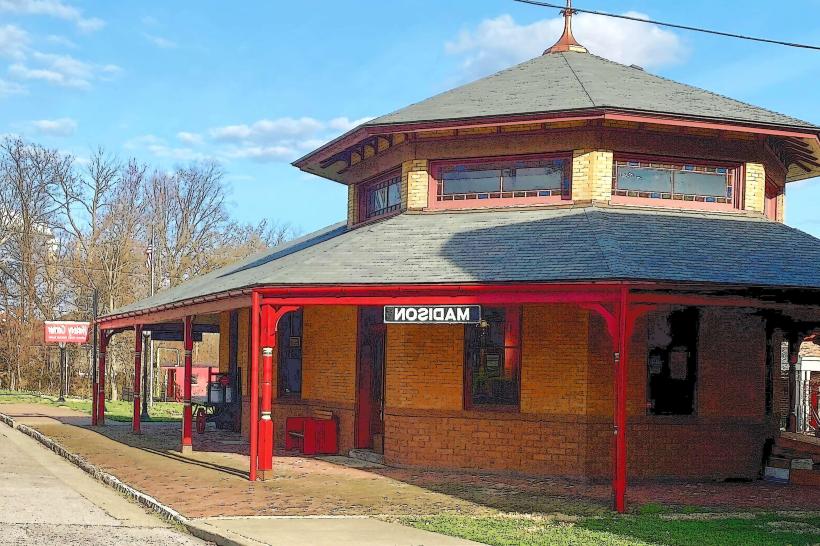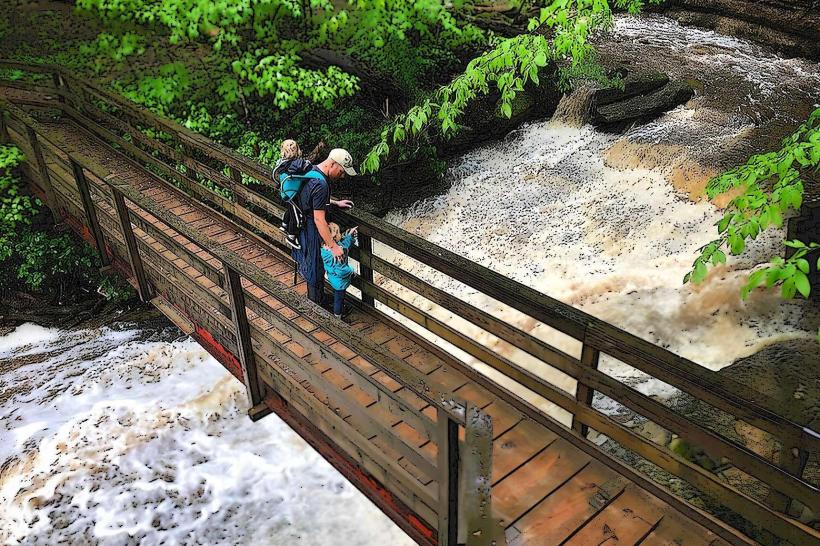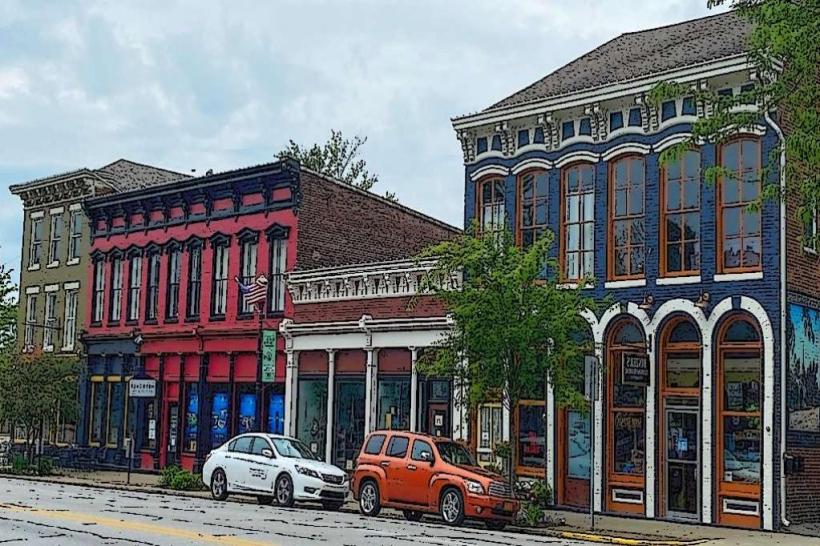Information
Landmark: Madison Historic DistrictCity: Madison
Country: USA Indiana
Continent: North America
Madison Historic District, Madison, USA Indiana, North America
The Madison Historic District, located in Madison, Indiana, is one of the nation’s most significant and well-preserved historic areas, notable for its extensive collection of 19th-century architecture and its important role in American history. Spanning roughly 133 blocks along the Ohio River, it is recognized as the largest contiguous National Historic Landmark District in the United States, designated in 2006 for its exceptional cultural and architectural value.
Historical Context and Significance
Founded in 1810 and incorporated in 1809, Madison quickly grew into a prosperous river town due to its strategic location on the Ohio River, serving as a commercial hub for shipping, trade, and transportation during the 19th century. The district’s preservation provides a vivid snapshot of this formative period in Indiana and American history, reflecting Madison’s development from a frontier town into a thriving urban center by the late 1800s.
Madison was also an important site in the abolitionist movement. The city housed the Eleutherian Institute (later Eleutherian College), founded in 1848 as one of the first educational institutions in the country to admit students regardless of race or gender, symbolizing Madison’s progressive stance during a turbulent era.
Architectural Styles and Features
The district’s built environment is predominantly characterized by three major architectural styles popular in the 19th century, showcasing the evolution of American architectural tastes:
Federal Style (circa 1810-1830s): This style is distinguished by its simple, balanced proportions, symmetrical windows, and understated decorative elements. The Federal style reflects the early American republic’s classical inspirations.
Greek Revival (circa 1830-1860): The Greek Revival buildings display grand columns, pediments, and bold moldings that evoke ancient Greek temples, symbolizing democracy and civic pride. This style is prominent in many of Madison’s public buildings and affluent residences.
Italianate Style (circa 1840-1885): Characterized by low-pitched roofs, tall, narrow windows with ornate crowns, and decorative brackets under wide eaves, the Italianate style reflects the romanticism of mid-19th-century America.
Together, these styles create a visually cohesive streetscape that narrates Madison’s growth and prosperity during the 19th century.
Key Landmarks within the District
Lanier Mansion (1844): A magnificent Greek Revival mansion designed by noted architect Francis Costigan for James F.D. Lanier, a prominent banker and financier. The mansion features a striking portico with fluted columns, elegant interior woodwork, and historical furnishings. It stands as a symbol of Madison’s economic and cultural zenith.
Charles L. Shrewsbury House (1842): Designed by Francis Costigan as well, this home is famous for its unique free-standing spiral staircase, large windows overlooking the Ohio River, and refined Greek Revival details. It has been meticulously preserved and opened as a historic house museum.
Schofield House (circa 1817): The oldest surviving building in Madison, originally a tavern and gathering place. It is historically significant as the site of the founding of the Grand Lodge of Indiana (Freemasons) in 1818.
Jefferson County Jail (1848–1850): An example of Greek Revival institutional architecture, the jail was used historically to detain local prisoners and also contained residential quarters for the sheriff.
Eleutherian College: Established in 1848 by abolitionists, it was one of the first colleges in the U.S. to offer integrated education regardless of race or gender, highlighting Madison’s progressive social history.
Preservation Efforts and Visitor Experience
Madison’s historic district remains remarkably intact due to concerted preservation efforts. Organizations like Historic Madison, Inc., founded in 1960, have played a vital role in conserving the district’s buildings, advocating for historical education, and promoting sustainable tourism.
Visitors can explore the district through guided walking tours, self-guided tours, and a smartphone app called “Madison’s Treasures,” which provides detailed information, historical photographs, and stories related to 53 significant sites. The district’s well-maintained streets, original brick sidewalks, and historic landmarks allow visitors to immerse themselves fully in the ambiance of a 19th-century river town.
Community and Cultural Life
Beyond its architectural allure, the Madison Historic District hosts an active cultural and commercial life. The downtown area offers:
Over 60 shops, including antique stores, artisan boutiques, and galleries.
A variety of locally owned restaurants featuring regional cuisine.
Annual events and festivals celebrating Madison’s heritage, arts, and community spirit.
Art galleries and studios that support local artists and craft traditions.
These elements contribute to a vibrant historic district that balances preservation with contemporary community needs.
Geographic Setting
Situated on a bluff overlooking the Ohio River, the Madison Historic District’s topography adds dramatic scenic views and provides a natural defense that historically protected the city. The proximity to the river was instrumental in Madison’s historic role as a port and commercial hub.
Summary
The Madison Historic District is a living museum of American architectural, social, and economic history. Its broad collection of Federal, Greek Revival, and Italianate buildings showcases the city’s 19th-century prominence as a river port and cultural center. Well-preserved landmarks such as the Lanier Mansion and Shrewsbury House, alongside progressive institutions like Eleutherian College, reveal a rich narrative of wealth, artistry, and social conscience. With strong preservation leadership and an active downtown community, the district offers an immersive, authentic experience of historic Indiana life along the Ohio River.





